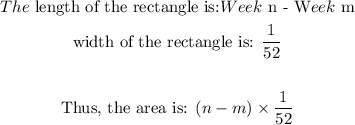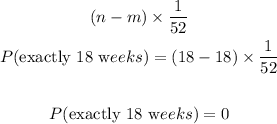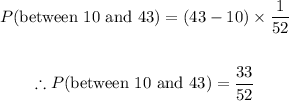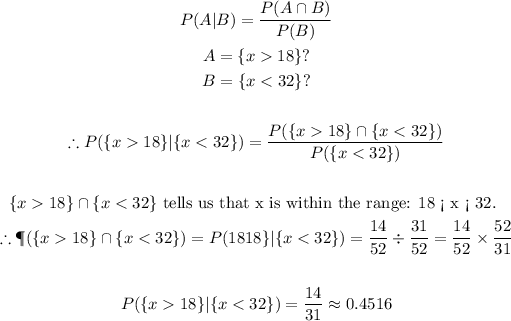Problem Statement
The question tells us that the number of births for a whole year follows a uniform distribution. We are asked to find the following:
1. The probability that a child is born exact at the beginning of the 18th week.
2. Probability that a child is born between weeks 10 and 43.
3. P(x > 18 | x < 32)
Method
To evaluate the probability of a uniform distribution, we need to know a couple of things:
1. The probability that a child is born in weeks 1, 2, 3, and so on, up to week 53, is equal and the probability is:

2. The way to find the probability within a range of weeks is:
To find the probability between the two weeks, m and n, we simply find the area of the rectangle.

With the above information, we can proceed to solve the question.
Implementation
1. The probability that a child is born exact at the beginning of the 18th week.
This means that m = 18 and n = 18. Thus, the probability that a child is born at the beginning of the 18th week is:

2. Probability that a child is born between weeks 10 and 43.
This means that m = 10 and n = 43. Thus the probability of being born between weeks 10 and 43 is:

3. P(x > 18 | x < 32)
This is a conditional probability as such, we can apply the Bayes theorem which states:
